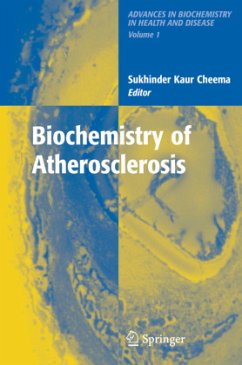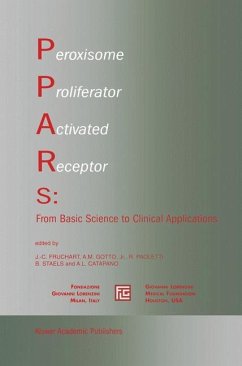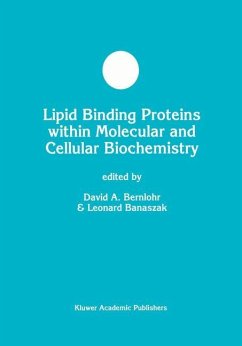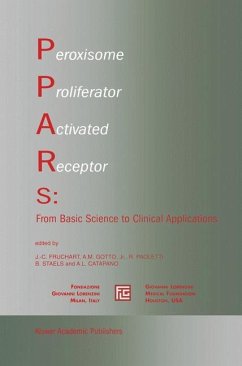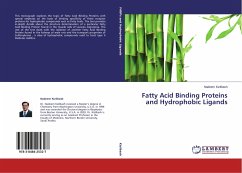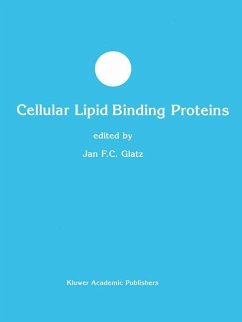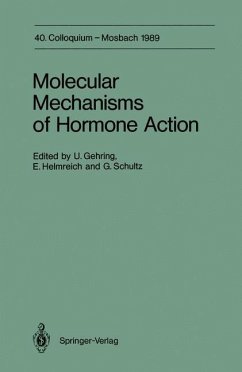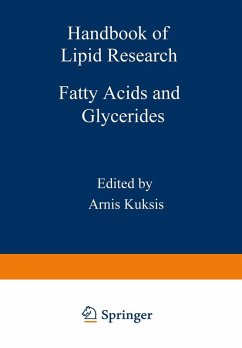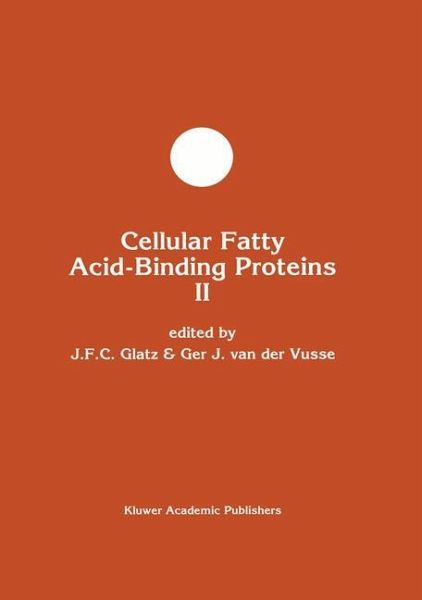
Cellular Fatty Acid-Binding Proteins II
Proceedings of the 2nd International Workshop on Fatty Acid-Binding Proteins, Maastricht, August 31 and September 1, 1992
Herausgegeben von Glatz, Jan F.C.; van der Vusse, Ger J.

PAYBACK Punkte
77 °P sammeln!
The cellular functions of lipid-transport proteins cannot can be obtained, as well as structural information re garding the local environment of the spectroscopic be fully realized without a comprehensive knowledge of probe. However, changes in protein fluorescence upon their binding properties. In particular, it is important to identify physiologically important ligands and establish ligand binding are sometimes too small to quantitate. their binding affinities, stoichiometries and specificities. This is particularly true for L-FABP, which has no tryp Since many lipid-binding proteins exhibit...
The cellular functions of lipid-transport proteins cannot can be obtained, as well as structural information re garding the local environment of the spectroscopic be fully realized without a comprehensive knowledge of probe. However, changes in protein fluorescence upon their binding properties. In particular, it is important to identify physiologically important ligands and establish ligand binding are sometimes too small to quantitate. their binding affinities, stoichiometries and specificities. This is particularly true for L-FABP, which has no tryp Since many lipid-binding proteins exhibit no enzymatic tophan residues. Also, some lipids lack intrinsic fluores cence or paramagnetic properties, including many lipids activity, binding parameters provide an important quan titative measure for comparing the 'activity' of various of physiological interest. In such cases, lipid analogues wild-type and mutant forms. For this purpose, binding containing structure-perturbing anthroylxoxy or doxyl assays that are quantitative, accurate and robust are de probes are required. Lipids that do have intrinsic fluor sirable. escence, such as parinaric acid, are labile and prone to For the intracellular fatty acid- and lipid-binding pro oxidation. The binding of native ligands can be moni teins, a variety of biochemical and biophysical binding tored by isotope-directed NMR techniques, provided assays have been used. The biochemical assays include that enrichment with 13C or another suitable isotope is those based on gel-filtration [1-3], equilibrium dialysis feasible. Although such NMR methods are useful for de [4], Lipidex [5,6] and liposomes [7].






